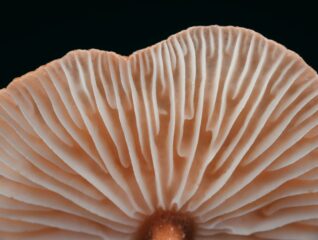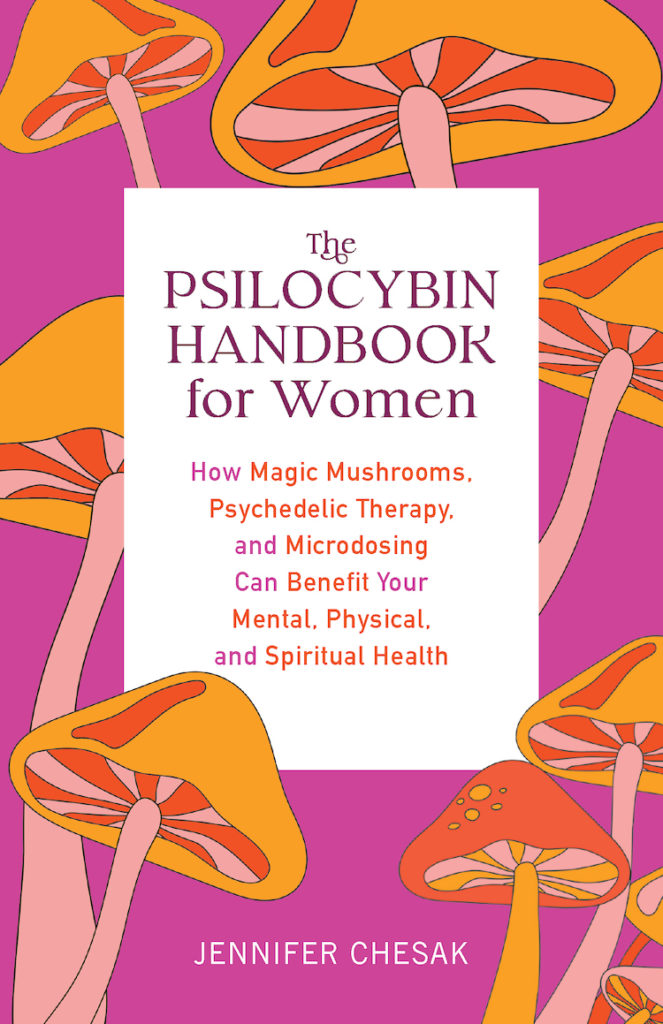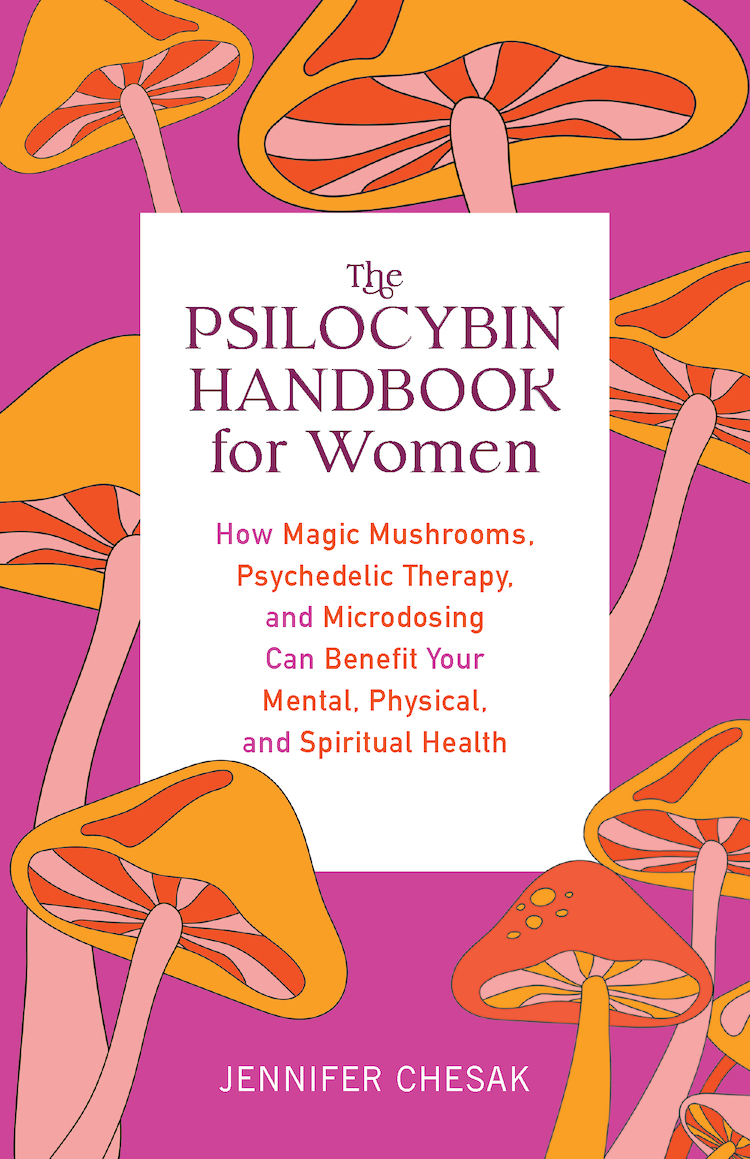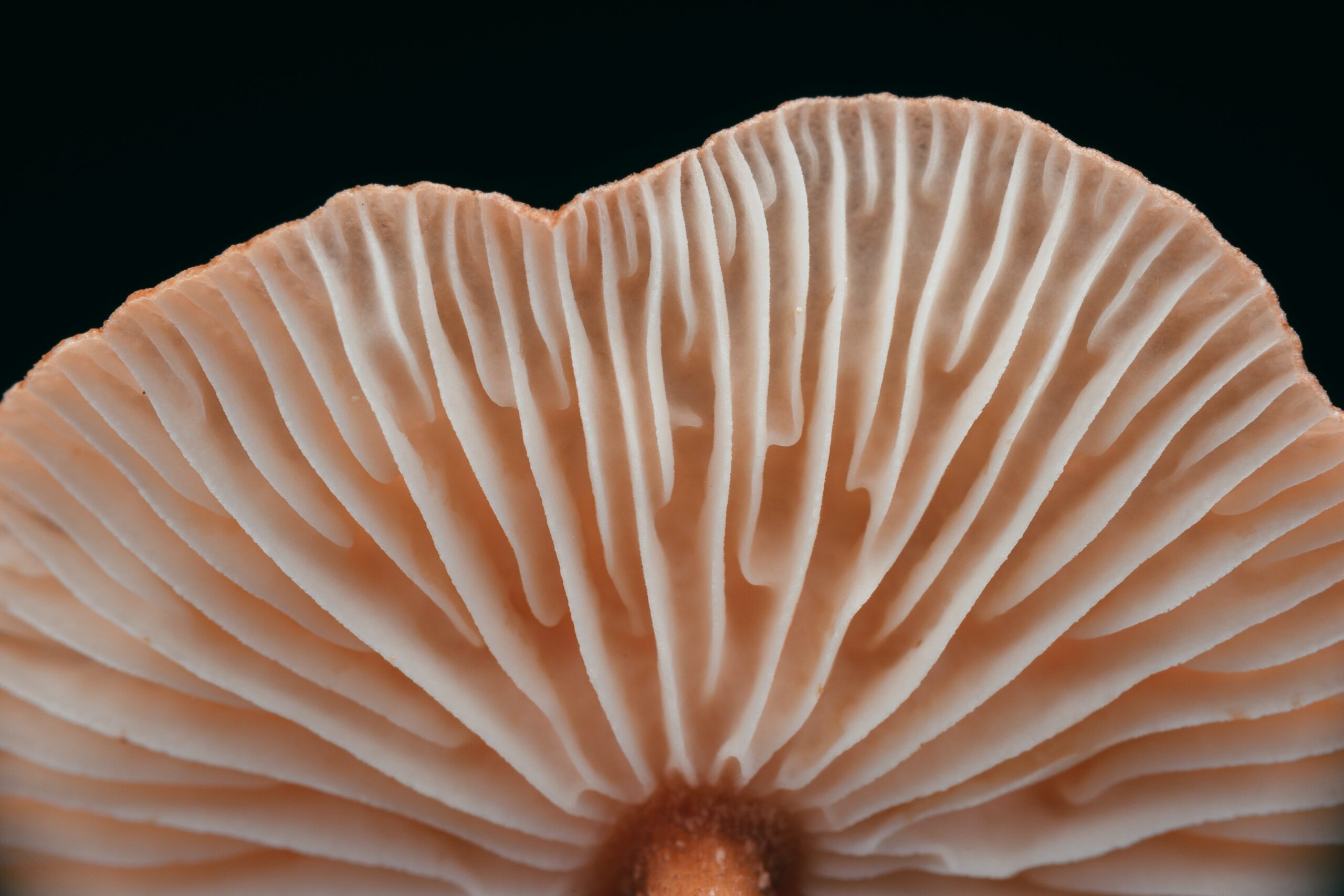
Psilocybin for Women: Your Questions Answered
- Book Sample /
- Health
 What are the effects of psychedelics and psilocybin for women, and how are they different across the sexes? Can psilocybin help with anxiety or depression? Will psilocybin affect me differently if I am menstruating? If you have ever wondered about the answers to any of these questions, you may want to check out The Psilocybin Handbook for Women by Jennifer Chesak!
What are the effects of psychedelics and psilocybin for women, and how are they different across the sexes? Can psilocybin help with anxiety or depression? Will psilocybin affect me differently if I am menstruating? If you have ever wondered about the answers to any of these questions, you may want to check out The Psilocybin Handbook for Women by Jennifer Chesak!
Packed with scientific research and easy-to-understand guidance, The Psilocybin Handbook for Women will walk you through the latest in scientific and medical developments in psychedelic therapy and the special considerations and use cases for those assigned female at birth.
Check out a brief excerpt below with some commonly asked questions about how psilocybin may impact women differently, and get a copy of Jennifer’s book today for more information!
* * *
Does psilocybin affect women differently?
The answer is maybe. When researching the topic of challenging trips, I come across something interesting. An exploratory analysis found that challenging trip reports were more common in females. Although more research is needed, the analysis suggests that people assigned female at birth may experience psilocybin (even at similar doses) differently because of hormonal, enzymatic, and social differences.
We do know that estrogen levels impact binding at 5-HT2A receptor sites. In an article for Psychedelic Science Review, former editor and one of the founders of the publication, Barbara E. Bauer, MS, synthesized some of the research surrounding this receptor. As a reminder, psilocybin and psilocin are 5-HT2A/5-HT1A receptor agonists. That means psilocybin binds to these serotonin receptors. Bauer notes that estrogen boosts the density of the brain’s 5-HT2A binding sites, notably in areas that control mood and emotion. She further notes that other findings related to how hormones impact serotonin receptors may have implications for an entourage effect.
Do women have a unique entourage effect?
Psilocybin and psilocin are not the only compounds, or alkaloids, in magic mushrooms. And remember, nearly 200 different species of Psilocybe exist, some with multiple strains. Think of each of these as a different recipe with varying ingredients—or alkaloids. The theory of the entourage effect is that different compounds may work in concert to produce a certain result. Research is still ongoing regarding the potential entourage effect with magic mushrooms and how we may be able to use it to our advantage.
For example, is it possible that combining two strains produces a better trip? Again, more research is needed. What Bauer is pointing out is that sex hormones may play a role as well in how psilocybin affects us. Do sex hormones and their unique trajectory in the context of the female reproductive system produce an entourage effect?
Does psilocybin impact the menstrual cycle?
Again, the answer is maybe. We don’t have robust scientific research on this yet.
Menstruation kicks off what’s called the follicular phase. Estrogen starts out low during this phase, and slowly climbs, peaking just before or around ovulation. During the follicular phase, progesterone remains level and low. After ovulation, the luteal phase begins. Here, estrogen dips, forming a valley, before climbing to a gentle peak and then declining toward menses. Meanwhile, progesterone peaks for the first time of the cycle in the middle of the luteal phase and then falls toward menstruation. If you look at a chart of these hormonal fluctuations, they appear like a rollercoaster ride, and the changes around ovulation and in the luteal phase are often what cause premenstrual or other symptoms.
Now add psilocybin to the mix. Consider that psilocybin binds to serotonin receptors. Serotonin activates and regulates the hypothalamic-pituitary-adrenal (HPA) axis, a feedback system that regulates your stress response, among other things. And the HPG axis (the one controlling the menstrual cycle) impacts the HPA axis. In animal models, estradiol (estrogen) raises cortisol (stress hormone) levels, for example. Likewise, evidence suggests that stress response can also impact sex hormone levels, illustrating that these closely intertwined axes affect each other, though all the mechanisms of interplay still need much more study. Theoretically, a psilocybin journey or microdosing could impact the HPG axis and therefore affect your menstrual cycle. But we don’t have definitive answers, just anecdotal reports and case studies that suggest a connection.
I ask de la Myco about whether it matters during a cycle when we use psilocybin. “I find that when people journey while they’re on their moon,” she says, “say they’re in one of the heavier bleeding stages and they’re eating mushrooms, I find that the mushrooms can be very exhausting on the body.” Often people fast or eat lighter on the day of a psilocybin journey. But in the days leading up to a bleed, de la Myco recommends focusing on nutrient intake. She abstains from doing deeper mushroom journeys right before or during menses and notes a time during the cycle that may be more optimal. “I find that the energy afforded to us during the ovulatory period,” she says, “is very conducive and helpful to the mushroom experience.”
Can Psilocybin Help Women with Anxiety?
In the United States, people assigned female at birth are much more likely to develop an anxiety disorder throughout their life than those assigned male at birth. The lifetime prevalence for women is more than 30 percent and more than 19 percent for men. Several different types of anxiety disorders exist, and most have a higher prevalence in women.
Psilocybin shows promise for easing anxiety. A study published in Frontiers in Psychiatry in mid-2022 assessed anxiety in psilocybin retreat participants. In the study, attendees completed questionnaires assessing trait anxiety and state anxiety before the psilocybin ceremony, the morning after, and at one-week followup. Trait anxiety is anxiety that is part of your personality, whereas state anxiety is anxiousness in a stressful situation. Not all participants completed all questionnaires. Overall, the researchers found an association with the psilocybin experience and a rapid and persisting (at least for a week) anti-anxiety effect. They correlate these changes with ego dissolution and lasting changes to the trait of neuroticism. Neuroticism—the tendency toward negative emotions and problems coping with stress—is a common trait in anxiety disorders. The researchers suggest that psilocybin helps to alter personality structures that promote anxiety. This type of study has lots of limitations, of course, and more research is needed.
More research is needed on psilocybin’s potential to help with anxiety and to look at different types of anxiety disorders and figure out specific strategies. But the evidence is certainly growing.
Can Psilocybin Help Women with Endometriosis and Adenomyosis?
We don’t yet have clinical trials that look at psilocybin as a potential to help ease symptoms of endometriosis or adenomyosis. But my eyebrows perk up anyway.
For one, we have anecdotal reports (as indicated in the section on menstruation) that psilocybin may play a role in regulating the menstrual cycle. Irregularity is a common complaint of people who have endometriosis. Of course, we need more research on whether psilocybin can truly help with this.
Researchers are also looking at psilocybin for its potential to help ease chronic-pain. The research is just getting started. A consideration is that psilocybin may have an anti-inflammatory effect. One study found that hot-water extracts from four psilocybin mushrooms downregulated pro-inflammatory mediators, known as cytokines, on human cell lines. To be clear, this study was not conducted in actual humans, just on cells in a lab.
Cytokines are proteins that cells release, and they can either contribute to inflammation or reduce it. Pro-inflammatory cytokines—specifically interleukin-6 (IL-6), interleukin-1β (IL-1β), and tumor necrosis factor-α (TNF-α)—are involved in nociceptor sensory neurons that detect potential threats and lead to pain sensations, the study authors note. Cyclooxygenase-2 (COX-2) is an enzyme also implicated in pain. In fact, non-steroidal antiinflammatory (NSAID) medications inhibit COX-2. Well, the magic mushroom extracts in the study, one of which included the popular Golden Teacher strain, significantly inhibited production of TNF-α and IL-1β, while also lowering concentrations of IL-6 and COX- 2. This experimental study did not research endometriosis or adenomyosis, however.
Consider this though. In addition to secreting hormones, endometriosis growths or lesions secrete pro-inflammatory cytokines. They specifically secrete IL-6 and TNF-α, among others. Lesions are also known to increase COX-2 expression. And COX-2 overexpression is a risk factor for endometriosis recurrence after surgical removal. Again, we need more research before we can determine if psilocybin can help with chronic-pain from endometriosis or adenomyosis or how it might be used in combination with existing therapies. I just hope that research gets underway.
* * *
Learn about more specific use-cases (like depression, dementia, alcohol use and more), research, and resources in The Psilocybin Handbook for Women!
The Psilocybin Handbook for Women
Check out the premier resource for women interested in harnessing the power of psilocybin, AKA magic mushrooms—from how to microdose and trip sit (yes, that's a thing) to understanding the latest psychedelic research—all in a decidedly bro-free format. If you’re looking for mushroom mansplaining, you’ve come to the wrong book. The
Learn more






